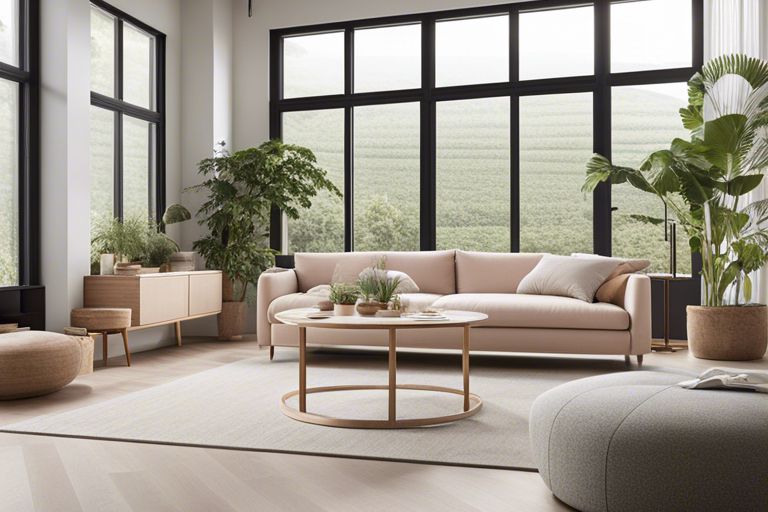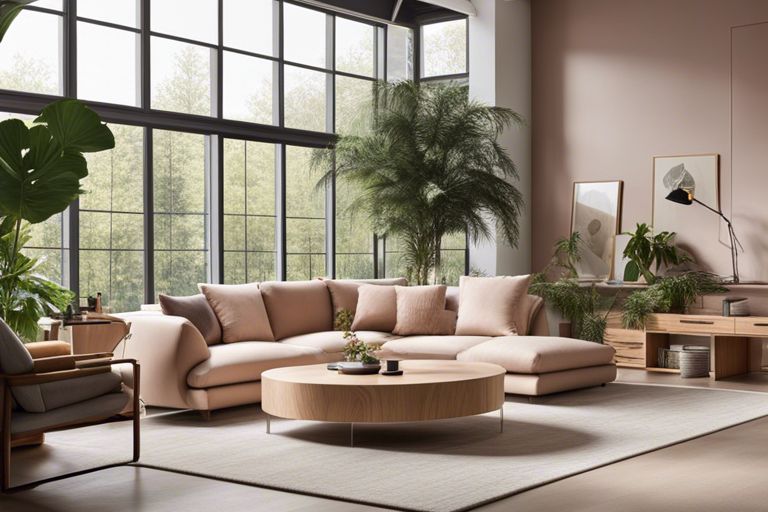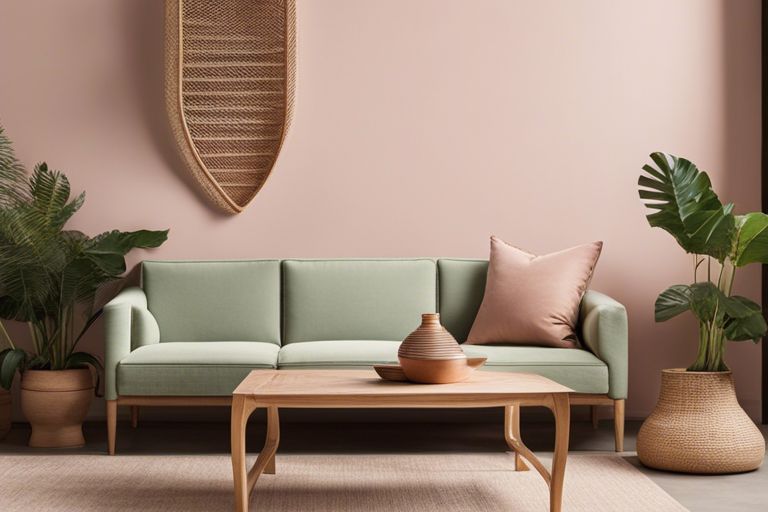Overlooking the importance of natural light in your biophilic design can hinder the overall atmosphere and functionality of your space. Pertaining to incorporating biophilic elements into your design, ensuring adequate natural light is crucial. In this blog post inspired by Dieter Rams’ minimalist approach, we will provide you with actionable tips and advice on how to maximize natural light in your biophilic design. By optimizing the use of natural light, you can enhance the connection to nature, improve well-being, and create a more sustainable living environment.
Key Takeaways:
- Strategic Placement: Position furniture and materials to make the most of natural light sources in your space.
- Reflective Surfaces: Utilize mirrors, glass, and light-colored finishes to bounce light around and brighten up the area.
- Window Treatments: Opt for sheer curtains or blinds that allow daylight to filter through while providing privacy and controlling glare.
Principles of Biophilic Design
While creating a biophilic design, it is crucial to adhere to certain principles to ensure a sustainable and harmonious connection between the built environment and nature. Biophilic design seeks to incorporate natural elements into spaces, promoting wellbeing and productivity. Two key principles to consider are maximizing natural light and fostering visual connections with the outdoors.
Embracing Natural Light
Light is a fundamental aspect of biophilic design, as it directly affects human health and wellbeing. Maximizing natural light in your design can drastically improve the overall ambiance of a space, creating a sense of openness and connection to the outdoors. Ensure that your spaces have ample windows and skylights to let in as much natural light as possible. Consider using light-colored furnishings and reflective surfaces to further enhance the brightness within the space.
The Importance of Visual Connections
Any biophilic design should prioritize establishing visual connections with nature. This involves incorporating views of green spaces, water elements, or natural landscapes into the design of the space. Visual connections with nature have been proven to reduce stress levels, increase focus, and promote a sense of tranquility and well-being. Integrate biophilic elements such as indoor plants, natural materials, and nature-inspired artwork to foster a deeper connection with the natural world.
Assessing Your Space
Clearly, incorporating natural light into your biophilic design is crucial for creating a vibrant and healthy living environment. To ensure you are maximizing the benefits of natural light in your space, it is imperative to assess your current setup. For a comprehensive guide on biophilic interior design principles, check out The Ultimate Guide to Biophilic Interior Design.
Identifying Natural Light Sources
Light plays a central role in biophilic design, as it impacts the overall ambiance and well-being of individuals in a space. Start by identifying the natural light sources in your room, such as windows, skylights, or glass doors. Take note of the direction they face and how sunlight travels through the space during different times of the day.
Evaluating Obstacles to Natural Light
Sources of natural light can be obstructed by various elements in your space. Consider furniture placement, window treatments, and any tall objects that may be blocking sunlight. To maximize natural light, rearrange your furniture to allow for better light penetration and choose light and sheer window coverings that still let sunlight filter through.
Natural Light can also be affected by external factors such as neighboring buildings or trees casting shadows. If these obstacles are significant, you may need to explore solutions such as pruning trees or strategically placing mirrors to reflect light into darker areas of the room.
Measuring Light Intensity
The intensity of natural light in your space can impact your mood, productivity, and overall well-being. Use a light meter or simply observe how bright different areas of your room are throughout the day. Understanding the varying light levels in your space will help you optimize your design to make the most of natural light.
Understanding the patterns of natural light in your space and addressing any obstacles will allow you to create a biophilic design that maximizes the benefits of sunlight. By strategically incorporating natural light sources and optimizing light intensity, you can transform your space into a healthy and invigorating environment.
Design Strategies for Maximizing Natural Light
Orientation and Layout
The orientation of your building and the layout of your spaces can significantly impact the amount of natural light that enters your space. Positioning living areas such as the living room, kitchen, and home office towards the south can maximize the amount of sunlight they receive throughout the day. This strategy not only increases natural light levels but also helps in reducing the need for artificial lighting during the daytime.
Window Placement and Size
On average, windows should cover about 10-15% of the floor area in a room to ensure optimal natural light penetration. Strategically placing larger windows on the south-facing side of your home or building can help in harnessing the maximum amount of sunlight. Additionally, consider incorporating skylights or clerestory windows to bring in additional natural light from above.
To enhance the overall natural light in your space, installing windows at varying heights can help in diffusing light throughout the room. This technique not only increases the distribution of natural light but also creates an interesting play of light and shadows within the space.
Minimizing Obstructions
To ensure that natural light can freely enter your space, minimize obstructions such as heavy curtains, large furniture pieces, or tall plants that can block sunlight from streaming in through the windows. Opt for sheer or light-filtering window treatments that allow natural light to pass through while still providing privacy.
Size matters when it comes to furniture and decor placement. Ensure that your furniture and decor items are appropriately scaled to the size of your space to avoid creating shadows or blocking light flow within the room.
Reflective Surfaces and Mirrors
Reflective surfaces and mirrors can be strategic tools in maximizing natural light within your space. Placing mirrors opposite windows can help in bouncing natural light deeper into the room, creating the illusion of a larger, brighter space. Additionally, incorporating reflective materials such as glass, metals, or light-colored paint on walls can help in amplifying the effects of natural light.
For instance, strategically placing a large mirror on a wall that receives direct sunlight can help in spreading natural light across the room, making the space feel more open and inviting.

Material Selection for Optimal Light Transmission
For
Glass and Glazing Options
Materials play a crucial role in maximizing natural light in your biophilic design. Glass and glazing options are popular choices for allowing light to penetrate deep into the interior spaces. Consider using low-iron glass, which has a higher light transmission quality compared to traditional glass. Additionally, double or triple glazing with low-emissivity coatings can help improve insulation while still allowing ample natural light to filter through.
For
Translucent Materials and Screens
When considering translucent materials and screens, options like polycarbonate panels, acrylic sheets, or fabric screens can help diffuse light and create a softer, more ambient glow in your space. These materials are ideal for maintaining privacy while still letting in natural light. By strategically placing translucent partitions or screens, you can guide light deeper into the room, reducing the need for artificial lighting during the day.
The use of Translucent Materials and Screens in your biophilic design allows you to effectively control the flow of natural light while adding visual interest and texture to the space. By experimenting with different translucent materials and screen designs, you can create unique patterns of light and shadow that enhance the overall ambiance of your environment.
Light-Reflecting Finishes
With light-reflecting finishes, such as glossy paint, metallic accents, or mirrored surfaces, you can bounce natural light around the room, brightening up darker areas and creating a sense of spaciousness. These finishes are perfect for maximizing the impact of available light sources and can help reduce the reliance on artificial lighting during daylight hours.
It’s crucial to choose light-reflecting finishes wisely to avoid creating glare or overly bright spaces. Opt for finishes with a subtle sheen or reflective quality that can enhance the natural light without causing discomfort or harsh reflections. Experiment with different finishes in various areas of your space to determine the most effective combinations for optimizing light transmission and visual appeal.
Lighting Design Considerations
Now let’s look into important considerations for optimizing the lighting in your biophilic design.
Balancing Natural and Artificial Light
Any successful biophilic design must find a balance between natural light sources and artificial lighting. Maximizing natural light not only reduces energy consumption but also connects occupants with the external environment. Artificial lighting should complement natural light, filling in the gaps when daylight is insufficient. Consider adjustable lighting systems that can adapt to the changing natural light throughout the day to create a harmonious indoor environment.
Task Lighting and Ambient Lighting
Any significant aspect of lighting design is the balance between task lighting and ambient lighting. Task lighting is focused, providing illumination for specific activities such as reading or cooking, while ambient lighting creates an overall glow that sets the mood and provides general illumination. When planning your lighting design, consider the function of each space and layer different types of lighting to achieve both practicality and ambiance.
Lighting design in biophilic spaces plays a vital role in enhancing the overall experience and well-being of occupants. By carefully considering the balance between natural and artificial light, as well as the interplay between task and ambient lighting, you can create a space that is not only visually appealing but also functional and comfortable.
Circadian-Friendly Lighting
Any incorporating circadian-friendly lighting into your biophilic design is crucial for supporting the natural rhythms of the human body. Utilize lighting systems that mimic the color temperature and intensity of natural daylight throughout the day to promote well-being and productivity. Consider incorporating tunable white lighting fixtures that allow you to adjust the color temperature based on the time of day, supporting a healthy circadian rhythm.
Considerations such as color temperature, intensity, and timing of light exposure can have a significant impact on your well-being and productivity. By integrating circadian-friendly lighting into your biophilic design, you can create a space that not only looks good but also supports your natural biological clock.
Overcoming Challenges and Limitations
Dealing with Limited Natural Light
Unlike buildings with ample natural light, spaces with limited access to sunlight present a design challenge. To maximize natural light in these areas, consider incorporating reflective surfaces like mirrors and light-colored furnishings. These elements help bounce light around the room, creating a brighter and more airy feel. Additionally, strategically places glass partitions or doors can help distribute natural light throughout the space.
Addressing Glare and Heat Gain
Overcoming glare and heat gain in a space filled with natural light is crucial to ensure comfort and functionality. With smart design choices like installing adjustable blinds or shades, you can control the amount of light entering the room while still enjoying the benefits of natural light. Another effective solution is using low-emissivity glass, which helps reduce heat transfer and minimize glare, eliminating potential discomfort.
Integrating Technology for Enhanced Natural Light
Dealing with the challenges of limited natural light can be made easier by leveraging technology. To increase natural light in spaces where traditional solutions fall short, consider installing light tubes or skylights. These innovative technologies bring natural light into interior rooms and spaces that lack direct access to windows, enhancing the overall biophilic design.
Summing up
Upon reflecting on the importance of natural light in biophilic design, it is clear that maximizing this resource is important for creating spaces that promote well-being and connection to nature. By strategically incorporating natural light into your design, you can enhance occupants’ health, mood, and productivity while also reducing energy costs and environmental impact.
FAQ
Q: Why is maximizing natural light important in biophilic design?
A: Natural light has numerous benefits, including boosting mood, productivity, and overall well-being. In biophilic design, maximizing natural light helps create a connection to the outdoors, promotes a sense of calm, and reduces the need for artificial lighting.
Q: What are some strategies for maximizing natural light in biophilic design?
A: Some strategies include using large windows, skylights, light colors for walls and furniture, strategic placement of mirrors to reflect light, and minimizing obstructions that block sunlight. Additionally, incorporating light-filtering materials like sheer curtains or frosted glass can help soften and distribute natural light throughout the space.
Q: How can I enhance the natural light in my biophilic design without sacrificing privacy?
A: To enhance natural light while maintaining privacy, you can consider using translucent or textured glass, window films, or louvered shutters. These options allow light to filter through while preventing direct views from the outside. Additionally, strategically placing indoor plants near windows can help create a visual barrier without blocking light.

